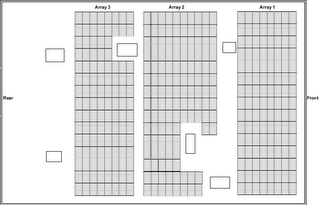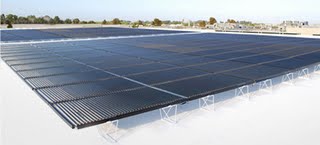Advantage Laser Installs 21.8KW Solyndra Solar Array



7 Comments to Advantage Laser Installs 21.8KW Solyndra Solar Array
Great writeup Marvin. Look forward to your followup posts on this project.
January 19, 2010
Very impressive. I learned alot.
January 20, 2010
great job guys,looking forward to following the project as it proceeds,with brian c. onboard-you will succeed!!jeff//superior automotive
Solar Power Financing: The Power Purchase Agreement or PPA is a contract between the service provider and the customer. Each power purchase agreement is unique, because different clients are going to have different needs. We want to understand what your needs are and write the power purchase agreement in such a way that it fits the goals of your business. Nationwide Solar Power will design, install and maintain the system, and the client buys the electricity that the system provides. Nationwide Solar Power is responsible for not only maintenance and installation, but insurance and replacement parts as well. The energy provided will be sold at a locked in rate that usually lasts for 20 to 25 years, depending on how long the power purchase agreement is for. When this amount of time expires, the client has the option of purchasing the equipment or signing another Power Purchase Agreement. A third option is to do neither, in which case the equipment will be removed at no cost to the client. So basically, a power purchase agreement puts into words the service and equipment you will be receiving, and how much the service or equipment will cost. This protects the client, installer, and service provider from any undue misunderstandings. The solar investment tax credit was extended for eight years under the Emergency Economic Stabilization act of 2008. This tax credit covers 30 percent of the cost of installation for commercial and residential locations. Organizations that are tax exempt can take the 30 percent as a grant for projects started in 2009 or 2010, and completed before 2016. Organizations that are tax exempt include schools, local government facilities, and non-profit organizations. With electricity costs expected to rise as more fossil fuel restrictions are put into place, many clients are enjoying the benefits of a power purchase agreement that allows them to purchase electricity for the long term future at costs well below those of a utility company. The capital that is saved from the lower electric costs can be used in other business ventures, such as expansion. It is also beneficial to the client to not have to worry about such things as bad weather or natural disasters damaging the equipment. With a power purchase agreement, the service provider handles the insurance on the equipment, so if a disaster takes place the equipment will be repaired and or replaced at no cost to the client. Being a service provider to a large number of clients allows the service provider to buy insurance at a much lower cost. If the equipment were to stop working properly, or not work at all, the service provider will show up at your property and asses the situation. Once the problem is found, all equipment that needs to be repaired or replaced will be done at no charge to the property owner.
Hi there, I just finished reading some of your posts and found you to be quite informative. Thanks.
I’m really glad I found this post. I’ve been checking for info on solar energy for ages.Looking forward to reading through more posts about energy.
Welcome To Nationwide Solar Power
Nationwide Solar Power designs, installs and maintains commercial solar and utility scale solar power systems. Solar electricity provides property owners with the opportunity to generate some or all of their annual energy needs. We can enable businesses, schools, governments, and utilities to benefit from predictable, renewable energy. Nationwide Solar Power PPA (Power Purchase Agreement) provides financing. We assume all the risks and responsibilities for your solar electric system, while the property owner pays for electricity at long term predictable rates. This is a hedge against the ever rising cost of electricity.


January 14, 2010